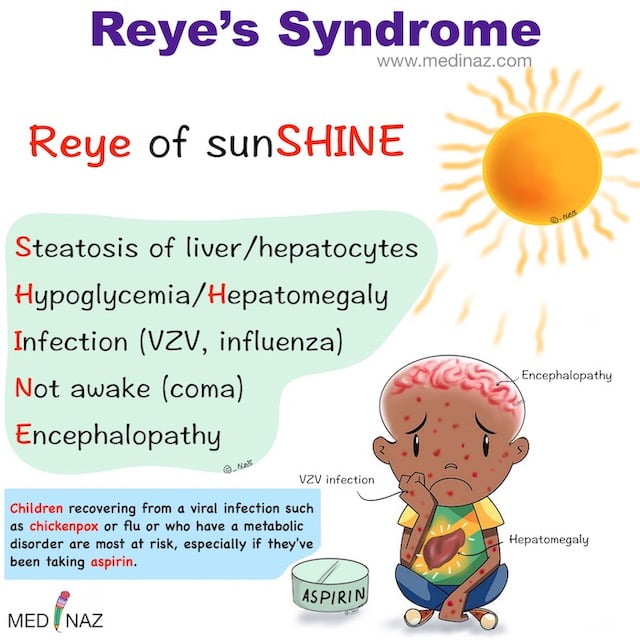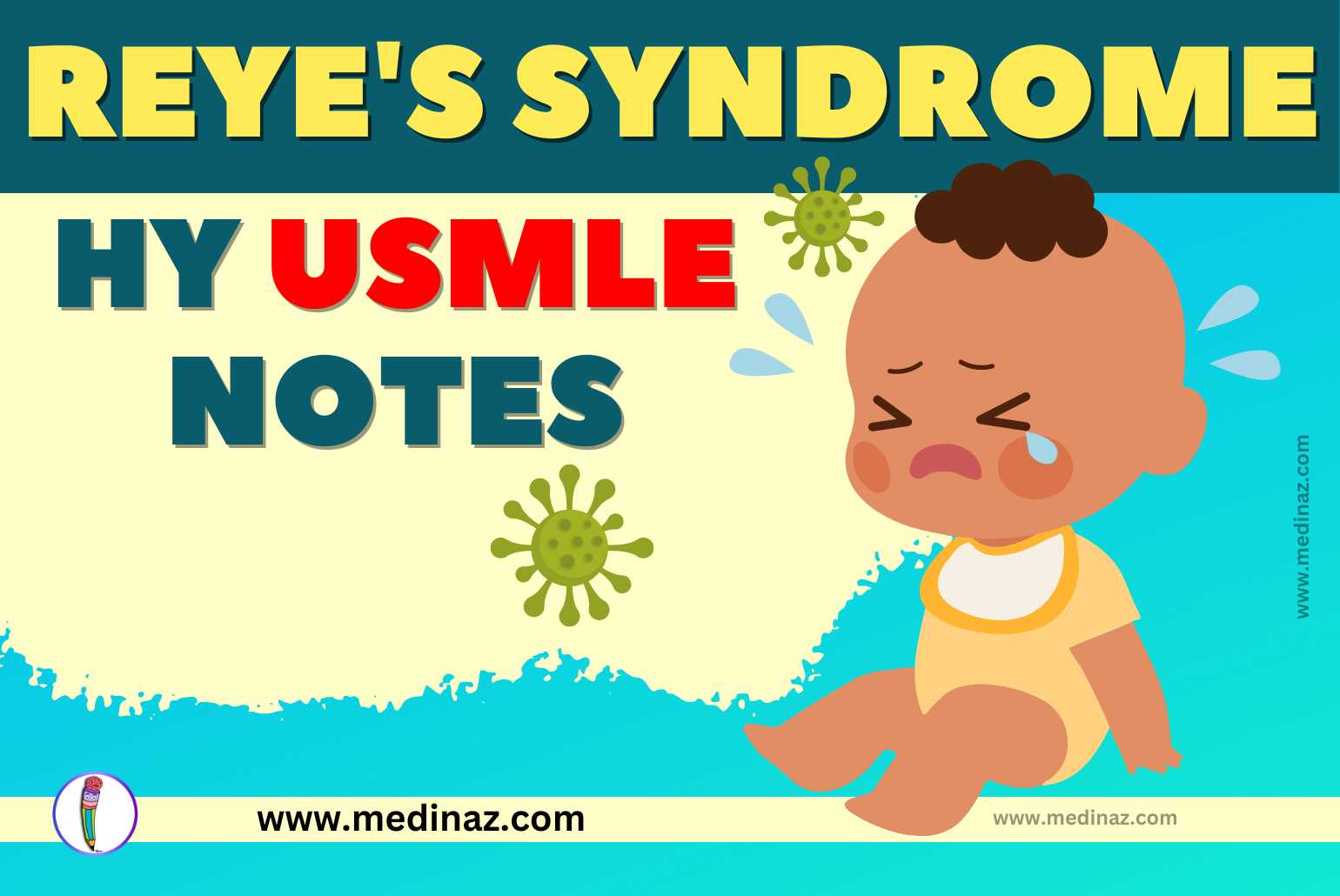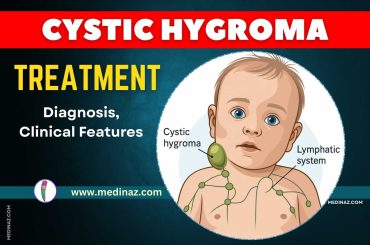Reye’s Syndrome USMLE Notes & Mnemonics contains all the high-yield points you need to know.
- Definition: Rare, serious condition causing acute encephalopathy and fatty liver.
- Association: Often follows viral infection (e.g., influenza, varicella) and linked with aspirin use in children.
Pathophysiology
- Aspirin metabolites may interfere with mitochondrial functions in liver cells. (ref)
- Results in hepatic steatosis and encephalopathy.
Epidemiology
- Mainly affects children and teenagers.
- Has become rarer due to decreased aspirin use in children.
Clinical Features
- Rapidly progressive encephalopathy.
- Vomiting.
- Liver dysfunction.
- Seizures and loss of consciousness in severe cases.
- Hypoglycemia and elevated liver enzymes (ALT and AST).
Diagnosis
- Clinical history (recent viral infection, aspirin use).
- Elevated liver enzymes.
- Hyperammonemia.
- Exclusion of other causes of acute liver failure and encephalopathy.
Treatment
- Supportive care (IV fluids, electrolyte management).
- Reduction of intracranial pressure (if needed).
- Avoid aspirin and aspirin-containing products.
Prevention
- Avoid aspirin in children and teenagers, especially during viral illnesses.
Reye’s Syndrome USMLE Mnemonic: “REYE’S“
- Rapid progression
- Encephalopathy
- Young population (children/teenagers)
- Elevated liver enzymes
- Salicylates (aspirin) association

Check other important USMLE Notes
Reye’s Syndrome USMLE Key Points:
- Recognize the association with aspirin use in the context of a viral infection.
- Understand the clinical presentation, particularly the combination of encephalopathy and liver dysfunction.
- Remember that Reye’s syndrome is a diagnosis of exclusion and requires careful clinical assessment.
- Emphasize the importance of supportive care and the avoidance of aspirin in pediatric populations during viral illnesses.
A Visual Learning Platform





